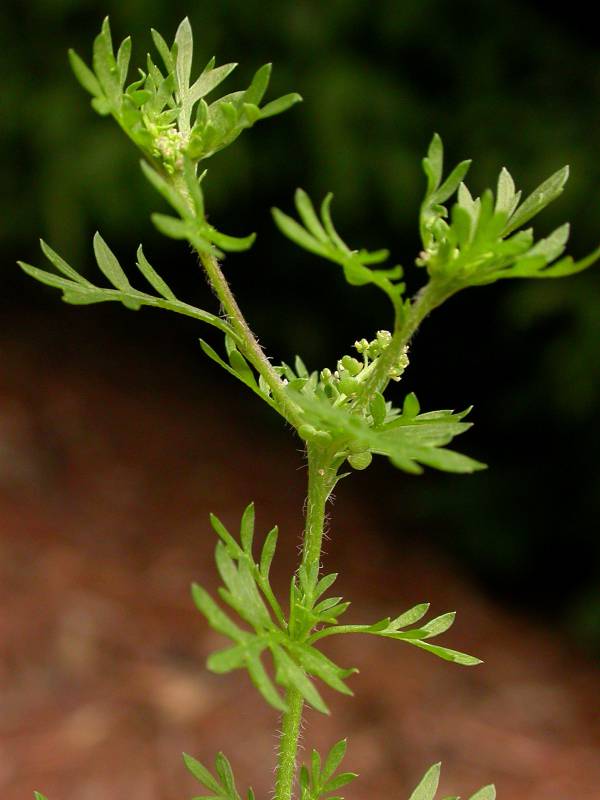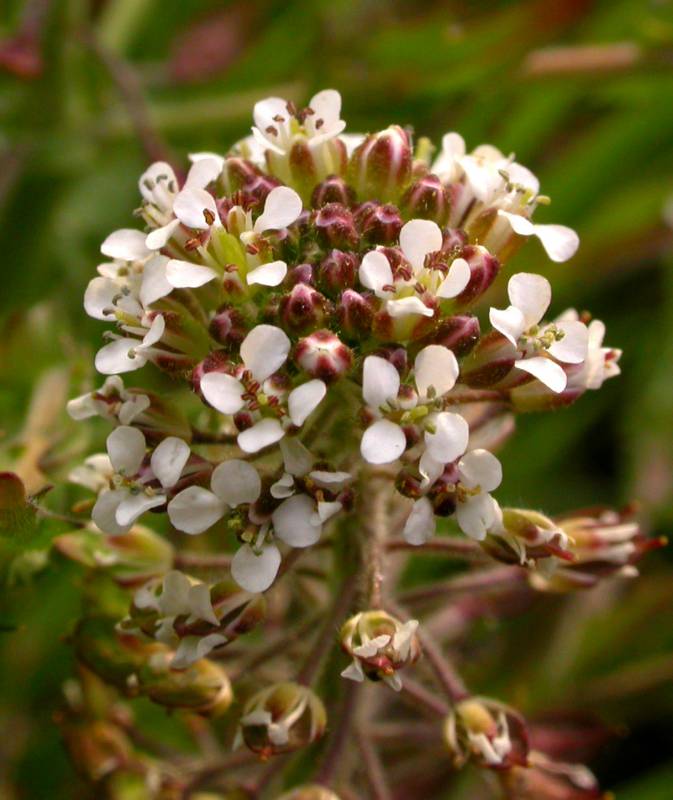Lepidium didymum
Lepidium heterophyllum
lesser swinecress, lesser wartcress
purple-anther pepperweed, Smith's pepperweed
Leaves alternate, numerous, ovate-oblong, 1.5-3 cm. long, pinnatifid, the segments narrow, entire to pinnatifid.
Inflorescence of many-flowered, crowded, axillary, bractless racemes 1-4 cm. long; pedicles slender, 1.5-2.5 mm. long;
sepals 4, spreading, 0.5 mm. long, deciduous;
petals 4, white, linear, minute;
stamens 2.
Silicles strongly wrinkled, 2 mm. broad and 1.5 mm. long, cordate and notched, inflated and slightly obcompressed.
Lepidium didymum
Lepidium heterophyllum
Occurring west of the Cascades crest in Washington; British Columbia to California, Arizona, and Texas eastward and northward to the Atlantic Coast.
Occurring chiefly west of the Cascades crest and in the Columbia River Gorge in Washington; southwestern British Columbia to California, also in scattered locations in the eastern U.S.
- Local floras:
BC,
CA,
OR,
WA
- Local Web sites:
CalFlora,
CalPhotos,
Flora NW,
PNW Herbaria
WildflowerSearch
iNaturalist (observations)
USDA Plants Database
- LBJ Wildflower Center
- SEINet
- Plants of the World Online
- Encyclopedia of Life
- Wikipedia
- Google Image Search
- Local floras:
BC,
CA,
OR,
WA
- Local Web sites:
CalFlora,
CalPhotos,
Flora NW,
PNW Herbaria
WildflowerSearch
iNaturalist (observations)
USDA Plants Database
- LBJ Wildflower Center
- SEINet
- Plants of the World Online
- Encyclopedia of Life
- Wikipedia
- Google Image Search



